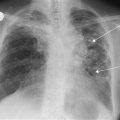Hallucinations
An hallucination is an apparent sensory perception of an external object when no such object is present. It is to be differentiated from an illusion, which is a real perception that is misinterpreted.
History
Obtain a clear history of the hallucination. Common hallucinations include hearing voices when no-one has spoken; seeing patterns, lights, beings or objects that are not there; feeling a crawling sensation on the skin. Hallucinations related to smell or taste are rare. Pure olfactory hallucinations are strongly suggestive of temporal lobe epilepsy. Enquire about recreational drugs. Auditory hallucinations are more common in psychotic conditions such as schizophrenia. Acute onset of febrile illnesses may be associated with hallucinations, especially in children and the elderly. Enquire about alcohol abuse or alcohol withdrawal. Hallucinations may be ‘normal’, e.g. hearing the voice of a loved one who has recently died, being part of a bereavement reaction.
Examination
Check the patient’s temperature. Look for signs of infection. Look for signs of liver failure and kidney failure. Carry out a full neurological examination to exclude the possibility of a cerebral space-occupying lesion. A full mental state examination should be undertaken for possible psychiatric disorder.




